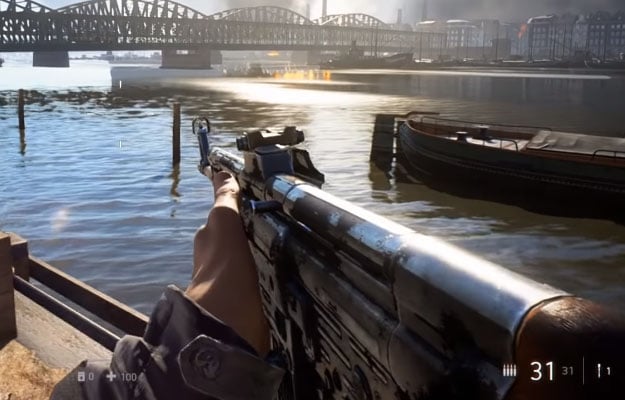Battlefield V With Ray-Tracing Currently Estimated At Sub-30fps In 4K, 60fps+ At 1080p On GeForce RTX 2080 Ti

We are on the cusp of the era of real-time ray tracing in games. It effectively begins once NVIDIA starts shipping its GeForce RTX series cards based on the company's Turing GPU architecture, with dedicated Tensor and RT cores underneath the hood, but what kind of performance can we realistically expect? That depends on the situation.
As you might already know, real-time ray tracing requires an enormous amount of horsepower. It deals with levels of detail that are beyond the scope of rasterization rendering, and can produce photorealistic visuals. To bring real-time ray tracing to games, companies like NVIDIA are focusing a sort of hybrid implementation, where parts of a scene are ray-traced.
It's a bit more complex than that, but the takeaway is that games featuring support for real-time ray tracing will look much better when it's enabled. To showcase this, developer DICE has been allowing media outlets to play with a special ray tracing-enabled build of Battlefield V.
The Digital Foundry team at Eurogamer posted more than 15 minutes of game footage, which really boils down to an excellent technical analysis of what enabling RTX on a GeForce RTX card offers, and specifically the GeForce RTX 2080 Ti. When you have the time, we highly recommend kicking back and watching the full video, which we've embedded above.
Digital Foundry talks about the techniques used to ensure smooth gameplay, with Battlefield V delivering greater than 60 frames per second at 1080p with RTX enabled. At 4K, however, the framerates plummet to below 30 fps. Here's a breakdown of performance, and these are only estimations based on a locked-down 1080p demo, adjusting its interscaler:
- 1080p: >60 fps
- 1440p: 40-50 fps
- 4K: <30 fps
So what's going on? The GeForce RTX 2080 Ti is an expensive card, after all, and the hope is that it will be able to handle 4K gameplay even with RTX enabled. That might be the case, though we won't know until the benchmarks arrive (ours included).
As it pertains to Battlefield V, DICE points out that it's not optimized across the board yet. More specifically, the game processes real-time ray tracing resolution at a 1:1 match with whatever the rendering resolution is at. So if cranking up the resolution to 4K, ray tracing is done at 4K as well, even though that might not be necessary.
Since real-time ray tracing is computationally heavy handed, implementing it will likely require optimizations at different levels of hardware, with specific framerate goals. Indeed, DICE was surprised to see Battlefield V running at 4K with RTX enabled in its current form, as that is not where the development focus has been.
DICE explained that it's looking into ways to speed up ray tracing while keep the same level of visual fidelity. There are various ways to do this, which are outlined in the video above. What that hopefully means is that real-time ray tracing at 4K will be possible on the GeForce RTX 2080 Ti in most cases, and perhaps other RTX models as well.
* Update: 6:00PM, 8/30/18 - This article has been updated to more accurately reflect the data shared by the source, Digital Foundry
* Update: 6:00PM, 8/30/18 - This article has been updated to more accurately reflect the data shared by the source, Digital Foundry

